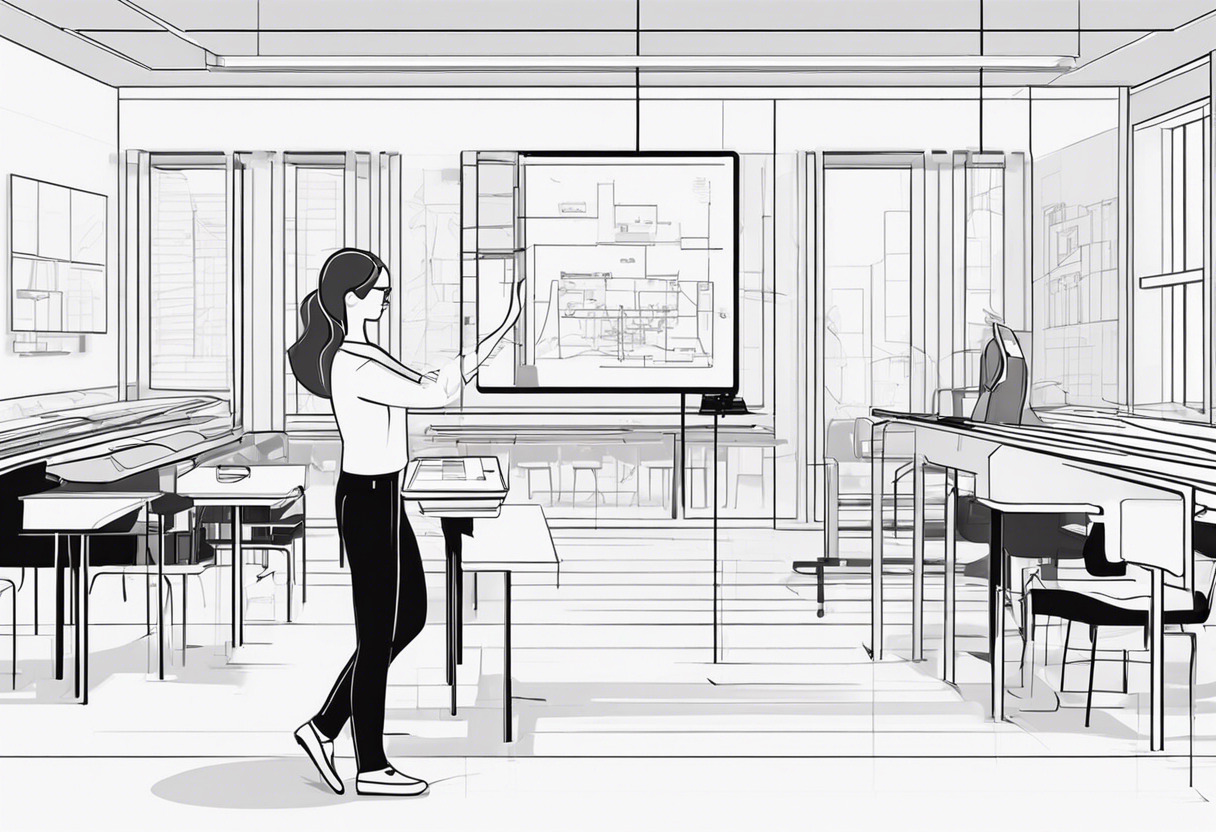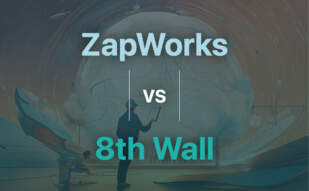When comparing ZapWorks and Augment, ZapWorks generally presents a more flexible, creative suite for AR, ideal for designers, developers, and marketers, despite some limitations in UX. Augment, however, shines in practical AR applications for various fields, highlighting physical world features and enhancing user experiences with sensory stimuli.

Key Differences Between ZapWorks and Augment
- ZapWorks offers a creative suite for AR including ZapWorks Designer and ZapWorks Studio, facilitating both no-code and coded AR experiences.
- Augment focuses on practical AR applications, augmenting the real world with digital visual, sound, or other sensory stimuli for various industries.
- Zapworks misses some features like world tracking and cylindrical tracking for WebAR, hence might be difficult for beginners.
- Augment, though comprehensive, requires core hardware components like a processor, sensors, a display, and input devices for AR systems.
- ZapWorks provides creative freedom but with reported limitations on industry-standard formats. Augment targets a broad cloud-connected Industry 4.0 ecosystem.
| Comparison | ZapWorks | Augmented Reality (AR) |
|---|---|---|
| Designing Tools | Offers a full suite: designer, studio, AR SDKs,creative suite. | Typically requires various different tools for designing. |
| User Friendliness | No-code,low-code,custom code options, designed for developers yet easy for beginners. | Depends on specific software/package used. Expertise usually needed for AR development. |
| Tracking Types | Offers world tracking, image tracking and face tracking. | Usage varies. Dependent on software and purpose. |
| Deployment Scale | Poweful tools for enterprise-scale deployment, including branding,hosting,priority support,security. | Can be scaled but depends on software used and hardware limitations. |
| Application | Used by brands for prototyping, sales and marketing, education. | Used across various sectors including retail, healthcare, mobile computing, and entertainment. |
| Industry Application | Focused on AR content creation; utilized across multiple sectors. | More broadly applied in various industries including education, healthcare, gaming and more. |
| Training | Offers specialist AR training. | AR training can be achieved but through diverse avenues, depending on hardware and software. |
| Price | Varies for personal, business and education use, and app embed. | Dependent on specific software/package used and development requirements. |
| Integration | Integrated with ARKit & ARCore, allows importing 3D models, characters, scenes. | Dependent on the AR software. |
What Is ZapWorks and Who’s It For?
ZapWorks is a comprehensive Augmented Reality toolkit, enabling everyone, from designers and developers to marketers, to create rich WebAR experiences. Its three-tiered approach, kitted with the Designer, Studio and AR SDKs, is aimed at offering ability-based resources ranging from no-code to custom code options. The platform is a choice for companies seeking to prototype products, drive innovation and impact marketing efforts. It’s also making its mark in education, enhancing the learning process with immersive tech.

Pros of ZapWorks
- ZapWorks Designer lends itself to no-apps, no-downloads, no-coding for exquisite WebAR creations.
- Various tracking types for wide-ranging use-cases.
- Includes robust multiple face-tracking and 3D mesh for feature-rich facial animations.
- Enterprise scale deployment provision.
- Specialist AR training for impactful experiences.
Cons of ZapWorks
- Some critics raise issues with the UX.
- Limited features and some difficult usage have been reported.
- Price variations depending on usage type.
What Is Augmented Reality (AR) and Who’s It For?
Augmented Reality (AR) is a powerful technology that overlays digital enhancements onto the real world to improve comprehension, interaction, and efficiency. AR is far-reaching and inclusive, aimed at industries as diverse as mobile computing, healthcare, entertainment, retail, and more, demonstrating its broad capabilities across business applications in various fields. AR fuels interactive marketing campaigns, smart business decisions, and makes products and equipment more accessible and safer to use.

Pros of AR
- AR enriches real-world environments with additional perception, enhancing user’s experiences.
- Proves advantageous in fields like design, navigation, education, and more.
- Surefire tool to increase brand awareness and influence sales.
- Enhances learning and comprehension when integrated into training programs.
Cons of AR
- AR system hardware requirements such as a processor, sensors, and input devices.
- Varied delivery methods might limit access to certain demographics.
- Niche-specific usability- not all industries find a use-case for AR.
- User category – personal, business, education
- Deployment requirements – application embedding
ZapWorks or Augment: Your Best Bet?
In the world of AR creation, Augment and ZapWorks are both heavy contenders. Which one is superior? Let’s dissect it.
Developers
ZapWorks, with its friendly Studio and no-code options, invites developers of all skills. However, critics suggest creative freedom is somewhat truncated. Augment, with its broad industry applications, lacks ease of use, leaving its adoption limited to more seasoned developers.

Education Sector
In education, both solutions offer value. ZapWorks provides tools for enhancing classroom instruction, while Augment caters to medical training with its detailed 3D body system visualizations.

Marketers
For marketers, bright, immersive AR campaigns with Augment tend to win the day. While ZapWorks also offers WebAR experiences, it falls short in providing expansive features compared to Augment.

End Consumers
In terms of end user experience, the practicality of Augment stands out due to its compatibility with various hardware, from smartphones to AR glasses. ZapWorks, though user-friendly, doesn’t match this flexibility.

Industry Innovators
When it comes to novel applications, Augment provides a larger canvassing tools, bolstering its appeal among Industry 4.0 innovators. Meanwhile, ZapWorks, while robust, restricts its scope to standard AR formats.

For the new-age developer seeking an user-friendly arsenal, ZapWorks shines. Conversely, seasoned programmers and industry innovators might lean towards Augment’s broad applications and capabilities. Your choice ultimately hinges on your needs, skills, and applications at hand.
Hannah Stewart
Content writer @ Aircada, tech enthusiast, metaverse explorer, and coffee addict. Weaving stories in digital realms.





